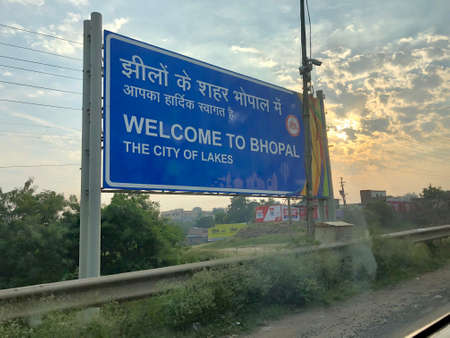1. Introduction: The Pulse of Indian Roads
Indian roads are a true reflection of the nation’s vibrant soul, where diversity meets daily life in motion. From bustling city streets in Delhi and Mumbai to serene village lanes in Kerala or Rajasthan, every journey offers an experience that is colourful, dynamic, and sometimes chaotic. Buses packed with commuters, auto-rickshaws weaving through gaps, trucks carrying goods across states, and two-wheelers zipping past all share this ever-evolving space. Amidst this lively tapestry, understanding traffic signs becomes not just a matter of following rules but a necessity for survival and harmony on the road.
Whether you are a local navigating your hometown or a long-distance traveller exploring new states, correctly identifying traffic signs is crucial for ensuring safety and smooth travel. In India, where road conditions can change rapidly and unpredictably, these signs act as silent guides—pointing out dangers ahead, giving directions, and maintaining order among the constant flow of vehicles and pedestrians. Ignoring them can mean risking not only your own safety but also that of others sharing the road. As we explore further, let us understand why mastering traffic signs is at the heart of confident and responsible driving on Indian roads.
2. Why Traffic Signs Matter: Beyond the Obvious
When you drive on Indian roads—whether it’s the bustling lanes of Mumbai, a dusty stretch in rural Rajasthan, or the chaotic intersections of Delhi—you’ll quickly realise that traffic signs are not just government formalities. Their importance goes much deeper, shaping our daily commutes and long journeys alike. In India, where every journey means sharing the road with everything from autorickshaws and two-wheelers to massive trucks and even tractors, understanding traffic signs is absolutely vital.
Traffic signs in India serve three crucial purposes: they save lives, reduce traffic jams, and help manage an incredibly diverse mix of vehicles. Let’s explore how:
| Purpose | How Traffic Signs Help |
|---|---|
| Saving Lives | Clear speed limits, pedestrian crossings, and warning signs reduce accidents in high-risk zones like school areas, sharp turns, and busy crossings. |
| Reducing Jams | No-parking boards, one-way indications, and lane discipline signs prevent bottlenecks on narrow city roads or congested market streets. |
| Managing Vehicle Diversity | Specific instructions for heavy vehicles, autos, and tractors maintain order and safety where different types of vehicles frequently interact. |
Every Indian driver has faced moments when a missing sign leads to confusion or chaos—a sudden U-turn by a tractor or a stopped bus causing a pile-up. Good signage not only guides us but also sets expectations for all road users. Whether you’re riding a scooter through Bengaluru rain or driving your family car on a highway out of Pune, paying attention to these signs is essential for everyone’s safety and sanity on the road.
![]()
3. Decoding Indian Traffic Signs: Types and Meaning
Understanding traffic signs is like learning a new language—one that keeps you safe on the bustling roads of India. To make sense of the chaos, Indian road signs are broadly classified into three categories: mandatory, cautionary, and informatory. Let’s break down these categories with examples every Indian commuter will recognise.
Mandatory Signs: Rules You Must Follow
Mandatory signs are the law of the land. They dictate what you must or must not do. Disobeying these can lead to hefty challans or even accidents. Common examples you’ll spot on highways and city streets include:
- Stop Sign: That iconic red octagon at busy intersections—ignoring it could be disastrous, especially near railway crossings.
- No Entry: Very familiar in crowded markets like Chandni Chowk, Delhi or Crawford Market, Mumbai, signalling vehicles to stay out from one-way streets.
- Speed Limit: Found everywhere from expressways to school zones. In hilly areas like Shimla or Ooty, speed limits help prevent mishaps on sharp turns.
Cautionary Signs: Warning Ahead!
Cautionary signs prepare you for what’s ahead—a sharp curve, a school zone filled with playful children, or even a stretch where cattle might cross unexpectedly. These triangle-shaped signs are your early warning system on unpredictable Indian roads:
- School Ahead: Essential near educational institutions in cities like Bengaluru or Pune; watch out for kids dashing across the street.
- Cattle Crossing: In rural stretches of Rajasthan or Uttar Pradesh, this sign reminds drivers to slow down for wandering cows and buffaloes.
- Bumpy Road: Common in monsoon-hit areas; warns drivers of potholes that could turn your drive into an off-roading adventure!
Informatory Signs: Your Roadside Guide
Informatory signs are all about making your journey smoother. They offer directions, distances, and information about facilities ahead—just what you need during long drives on highways like the Golden Quadrilateral.
- Petrol Pump: A lifeline when your fuel gauge drops during a Chennai-to-Bangalore trip—this blue sign points you to the nearest station.
- Hospital: Especially reassuring in remote areas when medical help is needed urgently.
- Direction Boards: Found at junctions big and small—from Varanasi’s maze-like lanes to broad expressways—these guide you towards your destination without missing a turn.
The Local Flavour
Indian roads come with their own quirks. From hand-painted boards in small towns to modern reflective signs in metro cities, understanding each category—and recognising their shapes and colours—can make every journey safer and more enjoyable. Whether it’s navigating through Old Delhi’s narrow alleys or cruising along Mumbai-Pune Expressway, being fluent in traffic sign language is essential for every driver in India.
4. Commonly Seen (and Sometimes Ignored) Signs on Indian Roads
Driving across Indian cities and highways, you cannot miss the variety of traffic signs vying for your attention. Yet, it’s common to see many of these signs either overlooked or misunderstood, often leading to chaos and near misses. Lets take a closer look at some of the most popular signs, their meanings, and what happens if we choose to ignore them.
Popular Traffic Signs in India
| Sign | Description | Typical Location |
|---|---|---|
| Speed Limit | Indicates maximum speed permitted | Highways, urban roads |
| No Entry | Prohibits entry for all vehicles | One-way streets, restricted areas |
| Stop Sign | Driver must come to a complete halt | Intersections, railway crossings |
| No Parking | Parking is not allowed at this spot | Crowded markets, schools, hospitals |
| Pedestrian Crossing | Warns drivers to slow down for pedestrians | Zebra crossings, near bus stops |
The Impact of Ignoring Traffic Signs: Real-World Scenarios
The reality on Indian roads is that ignoring these signs can have serious consequences. For example:
- If you overlook a No Entry sign in a busy city like Mumbai or Delhi, you risk head-on collisions and massive traffic jams.
- Ignoring No Parking zones outside railway stations or hospitals often leads to vehicle towing or hefty fines—and sometimes, blocked emergency access.
- Disregarding Speed Limits, especially on expressways like the Delhi-Gurgaon Expressway, increases accident risk due to sudden stops or sharp turns.
- Missing a Pedestrian Crossing sign in crowded areas such as Connaught Place can endanger lives and draw heavy penalties from traffic police.
Cultural Context: Why Do We Ignore?
The famous Indian “chalta hai” attitude—meaning “it’s okay”—often leads people to treat traffic rules as mere suggestions rather than strict laws. However, each sign is put up after careful study of local conditions and traffic patterns by authorities like the RTO. By respecting these signs, we not only protect ourselves but also contribute to smoother traffic flow and safer roads for everyone.
On Long Drives: Personal Experience Matters
If you’ve ever driven long-distance from Bangalore to Hyderabad or taken a road trip along the Golden Quadrilateral, you know how crucial it is to spot and obey every sign—especially at night or in remote stretches where visibility is low and help is far away. Paying attention can be the difference between a smooth journey and hours of delay or worse.
In summary, popular Indian traffic signs are more than just boards on the roadside—they are silent guides keeping our journeys safe. Let’s keep our eyes open and respect them every time we hit the road.
5. How to Identify Traffic Signs Correctly: Practical Tips for Every Indian Motorist
Driving on Indian roads is truly an adventure—whether you are navigating the endless stretches of the Delhi-Jaipur highway, tackling hairpin bends on the Western Ghats, or weaving through Mumbai’s chaotic traffic. Understanding and identifying traffic signs quickly can be a game changer for your safety and peace of mind. Here are some practical, India-specific tips to help every motorist decode road signs amidst our unique driving conditions.
Know the Three Major Categories of Indian Road Signs
The Motor Vehicles Act divides traffic signs into three main types: mandatory (red circles), cautionary (red triangles), and informatory (blue rectangles). Familiarize yourself with these shapes and colours—they act as quick visual cues even before you read the sign, especially important when you’re zipping past on a busy expressway or dodging auto-rickshaws in city lanes.
Adapt to Local Variations and Multilingual Signs
In India, you’ll often see signs in English, Hindi, or regional languages like Tamil or Bengali. On highways in Maharashtra or Karnataka, keep an eye out for bilingual boards. If you’re travelling inter-state, take time to learn common symbols; for example, a black cross on white means “No Stopping,” no matter which language accompanies it.
Spotting Signs in Challenging Conditions
Indian roads throw everything at you—dust storms in Rajasthan, foggy mornings in Punjab, or sudden downpours in Kerala. Always slow down near junctions and hill curves where visibility drops. Look for reflective paint or luminous strips used on most modern signs to help them stand out at night or during monsoons. Use your high beam judiciously on rural highways to spot distant boards without blinding other drivers.
Decode Hand-Painted and Temporary Signs
Not all signs in India are standard-issue metal boards! In construction zones or remote villages, you might see hand-painted warnings (“Diversion Ahead,” “Work In Progress”) on wooden planks or even rocks. Pay extra attention—these often signal sudden speed breakers or road closures that GPS apps won’t warn about.
Don’t Ignore Road Markings and Audible Alerts
Besides vertical signs, horizontal markings like zebra crossings, yellow boxes at intersections, and rumble strips play a huge role in urban areas. In cities like Bengaluru or Kolkata, listen for audible signals—horns from buses often indicate a stop ahead when there’s no visible signboard!
Practice Makes Perfect: Drive Mindfully
The more you drive across different terrains—from wide toll roads to narrow gullys—the faster you’ll learn to scan for signs automatically. Make it a habit to anticipate signage after every major turnoff or before approaching towns. This not only keeps you compliant but also drastically reduces sudden braking or confusion, especially on unfamiliar routes.
By sharpening your ability to spot and interpret traffic signs under real Indian conditions, you’ll make your journeys smoother, safer, and far less stressful—no matter how long the road ahead may be.
6. The Local Touch: Regional Languages and Familiar Symbols
India is a country of incredible diversity, not just in landscapes but also in languages and cultures. When it comes to traffic signs, this diversity brings unique challenges and opportunities. While the official language for road signs across India is English and Hindi, many people—especially in rural areas or different states—may feel more comfortable with their own regional languages and symbols. This makes multilingual signage extremely important for ensuring road safety and smooth travel.
Imagine driving from Tamil Nadu into Karnataka or from West Bengal into Assam. The change in language on signboards can sometimes lead to confusion, especially for those who are not fluent in Hindi or English. That’s why many state governments have started incorporating local languages such as Tamil, Kannada, Bengali, or Assamese alongside national languages. This simple step makes sure that everyone—from truck drivers on long journeys to families on road trips—can understand critical instructions without any guesswork.
But it’s not only about language. Indian roads are filled with uniquely familiar symbols: the coconut tree marking a coastal area, an elephant caution sign near wildlife corridors, or even the humble bullock cart symbol warning of slow-moving village traffic ahead. These locally recognisable icons connect deeply with drivers’ everyday experiences and make the intent of the sign instantly clear—no translation required.
When you’re behind the wheel on a long drive through different states, these multilingual signs and recognisable Indian symbols become your best companions. They help bridge gaps between communities and break down barriers that could otherwise cause hesitation or misunderstanding at crucial moments on the road. For tourists from other parts of India or abroad, these signs become a friendly guide, making every journey safer and more enjoyable.
In short, the ‘local touch’ in traffic signage is not just a cultural nod—it’s a practical necessity for keeping India’s vibrant roads accessible and safe for everyone, no matter where they come from or what language they speak.
7. Conclusion: Embracing Road Discipline for a Safer India
India’s roads are as diverse and vibrant as its people, stretching from the bustling streets of Mumbai to the serene highways of Kerala. As we embark on long drives across these incredible landscapes, understanding and respecting traffic signs becomes more than just a rule—it’s a crucial part of our driving culture. Traffic signs are not mere boards; they are silent guides ensuring our safety, helping us navigate crowded city intersections, winding ghats, and endless expressways with confidence. By embracing road discipline and making an effort to learn the meaning behind every symbol and signal, we contribute to smoother journeys for ourselves and fellow motorists. Let us take pride in knowing our traffic signs, teaching them to friends and family, and setting an example on the road. Together, we can make every journey—whether it’s a routine commute or an epic cross-country drive—a safer, more enjoyable experience across the heart of India.


